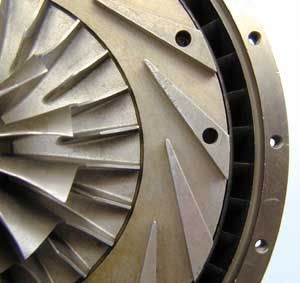skip to main |
skip to sidebar
What is TURBO ?
THE TURBO
- Turbos reclaim energy that would otherwise been dumped overboard in the form of heat, by using exhaust gasses to spin a turbine, which in turn spins a compressor, which compresses the intake air.
- Compresses intake air makes more power, because it allows you to burn more fuel per power stroke of the engine, and because it helps scavenge the engine.
Side Note: The new, compressed, intake charge "blows out" the remaining exhaust gases.
- The amount of work done by a turbo's turbine depends on the amount of gas flow through it, and the pressure differential across it.
- You can improve the turbine pressure differential by installing an exhaust system with a higher flow capacity than stock. It's impossible to have "too much" exhaust flow downstream of the turbo.
- The intake compressor works best when it has been specifically sized for an engine's flow requirments and boost levels.
- Intercoolers are our friends. They reduce the temperature of the compressed intake charge after the compressor has heated it.
- An intercooler is only good as the air flow into it and out of it!
- Wastegates limit boost levels by acting as a "rev limiter" for the turbo.
- "Boost creep" indicates a wastegate that is too small.
- High boost motors require good ignition systems. Most top end stumbles and misses are ignition problems.




No comments:
Post a Comment